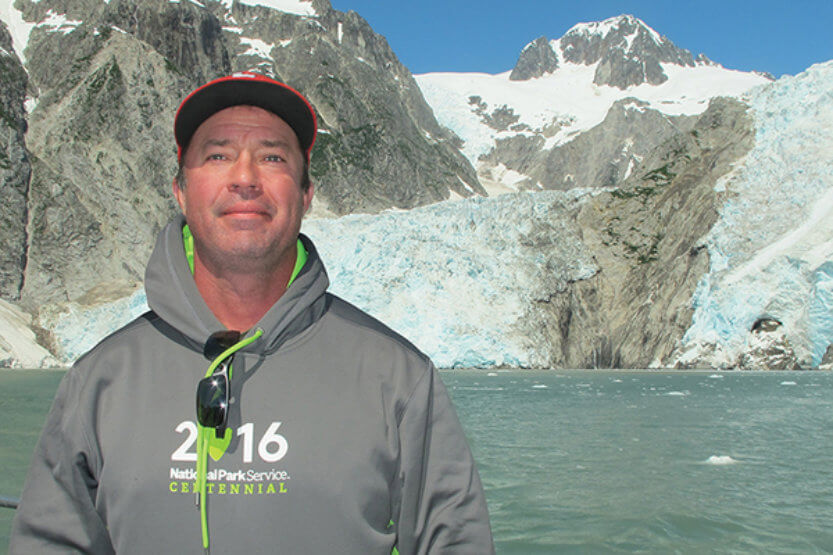Park Rover
 David Kroese’s adventures have taken him from the relative calm of Alaska’s Kenai Fjords to being engulfed by mating tarantulas in Big Bend, Texas. (Image courtesy of David Kroese)
David Kroese’s adventures have taken him from the relative calm of Alaska’s Kenai Fjords to being engulfed by mating tarantulas in Big Bend, Texas. (Image courtesy of David Kroese) Lots of men facing a mid-life stall opt to get a divorce or a sports car. David Kroese, ’93 LAS, visited all of the U.S. National Parks.
“I’d had a very good run,” Kroese says of his 20-plus years at DuPont, where he was an account manager in the biotech division, “but I’d reached the point where I wasn’t progressing. I needed to assess what I was going to do with the rest of my functional life.”
His “Eureka!” moment came at the national park in Fredericksburg, Va. A history buff, he’d finished recounting the bloody Civil War battles to his wife and they were in the gift shop. She picked up the National Parks “Passport” book with its map of 419 parks and said, “Maybe this is what you should do with your extra time.”
Kroese visited 50 parks over the next 18 months, then his quest got turbocharged by the discovery of the National Parks Travelers Club, a group of Park enthusiasts who swap info on passport stamps and lapel pins. The next two years—just in time for the Parks’ 100th birthday in 2016—he knocked off another 300. The following year, 2017, he quit his job and started writing his book, The Centennial: A Journey Through America’s National Park System (Wheatmark).
Pressed to name his favorites, Kroese tops the “scenic” list with Chiricahua National Monument in southern Arizona, a remote mountainside of ancient volcanic pillars called “Land of the Standing-Up Rocks” by the Apaches. His most memorable visits feature wildlife. He was on a second trip to Big Bend in Texas when he suddenly found himself in the midst of thousands of “male tarantulas out migrating to mate.” Kroese was especially captivated by the startling range of their colors, brushing off the spiders as “perfectly harmless.” Such was not true of an animal he encountered on a hike into the snows of Mt. Wheeler in Great Basin National Park in Nevada. Rounding a turn, he suddenly faced a very large mountain lion. He stood his ground and locked eyes—the right strategy, he later learned, for big cats, unlike bears, will attack a threat. The cougar eventually leapt into the trees but stalked him halfway down the mountain making ungodly noises.
Kroese survived to finish his book, which is 574 pages and took two years to write and edit. His next writing project will encompass all he left out of his first book.
“It’s become a lifelong passion,” he says.

